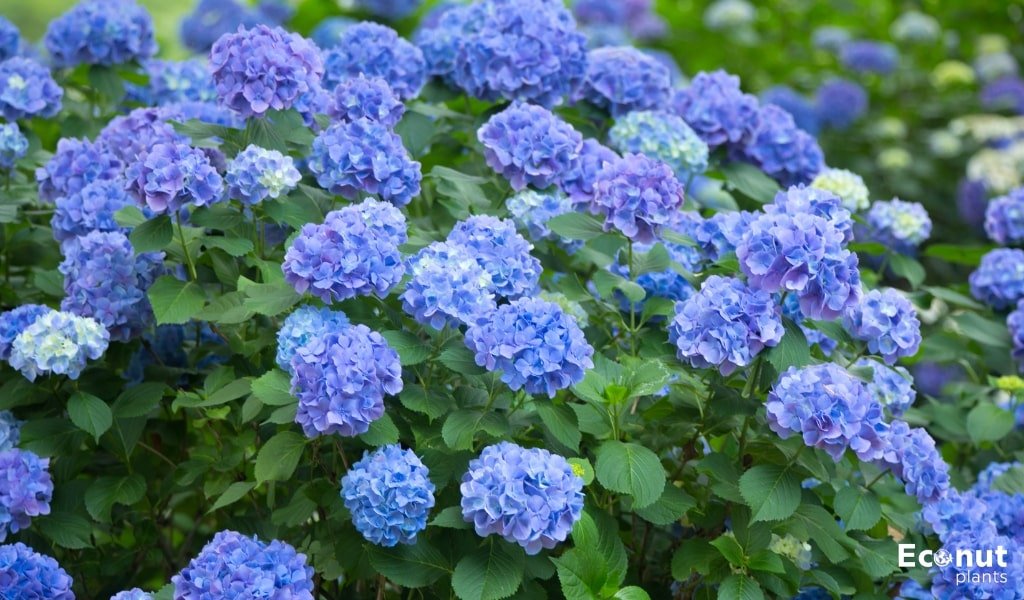Hydrangeas are a popular choice for landscaping and plant fans worldwide, so you’ll see them in many yards when you drive by in the spring. You may get blue blooms on your hydrangeas by adding coffee grinds to them.
Or perhaps they could generate even more vibrant blooms on your blue hydrangeas this season? Can coffee grounds cause hydrangeas to become blue? Is the article under consideration? To help you determine if it’s a reality, a myth, or entirely else.
Which Hydrangeas Have Colour Changes?

This is the big leaf hydrangea, or Hydrangea macrophylla, that you are searching for. Nearly all blue hydrangeas belong to this species. Success in managing colour has been documented with Hydrangea serrata, commonly called mountain hydrangea.
These species differ in a few subtle ways. If you have pink, purple, or blue hydrangea blossoms, you should be able to cause them to change colour.
Even with different soil treatments, white hydrangea flowers will always stay white. You may notice some pink on these white petals as they get older, but this happens at any soil pH.
Why do they look blue?
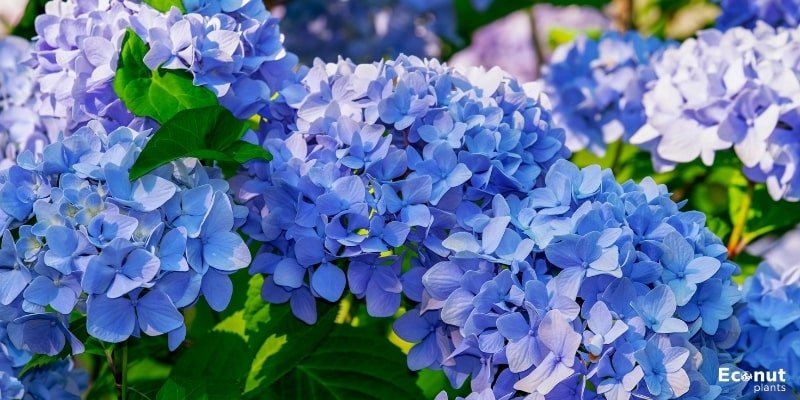
The hydrangea species exhibit a preference for acidic soil, which is seen in the sensitivity of its blossoms. What is meant by this? A lower pH in your soil will make it more acidic and result in bluer flowers.
Your soil’s alkalinity will determine how pink or crimson their blossoms will be. Purple flowers, often combined with pink and blue ones, will emerge from neutral soil.
A lower pH indicates that your soil is more acidic. Acidic soil can absorb any aluminum that might be in the soil. Aluminium is what gives your hydrangeas their stunning blue hue.
Soil pH Explained
The pH scale for soil is 0–14. A soil with a grade of 7 is neutral. If the value is less than 7, the soil is acidic; if it is greater than 7, the soil is alkaline or sweet. For blue blooms, the ideal pH of the soil is approximately 5.5.
Turning Your Flowers Blue
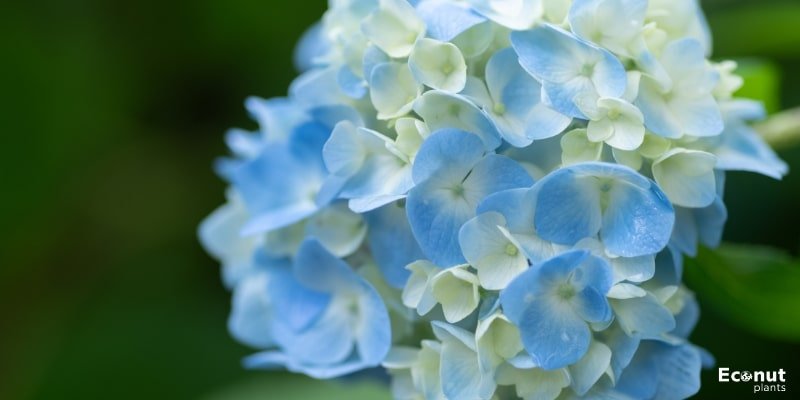
If you are expecting blue blooms on your big leaf hydrangeas, but they are blossoming pink, you have a few options. The first step is to enrich your soil with organic matter, such as compost. Consequently, the pH of your soil will steadily decrease.
Secondly, you can use a soil acidifier that you purchase from a garden center by following the instructions on the label. When using chemicals to prevent burns, less is always more.
Before making any amendments, it’s always advisable to conduct a soil test to see if you need to acidify your soil at all. To find out how much nitrogen is in your soil, you should also do this soil test. Soil testing is available online or at your local garden centers.
How about coffee grounds, then?
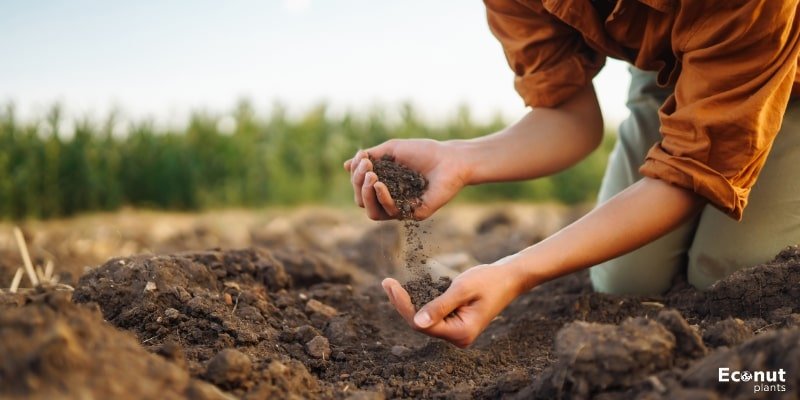
There are tales of gardeners adding coffee grinds to their soil and experiencing amazing results. You probably already know that coffee is acidic, especially if you drink it as frequently as I do. Now that I think about it, it appears hopeful that this might also make your soil acidic.
Coffee grounds are an organic material, and organic materials are always preferable for our soil and plant longevity. When using organic ingredients, you don’t have to be as concerned about applying too much and scorching your plants’ root systems.
For Those That Want to Test
If you’re ready to do this experiment, I recommend using either some diluted leftover black coffee from your morning cup of Joe or some new grounds. Because used or brewed coffee grounds lose a lot of their acidity during the brewing process, using them alone probably won’t be very beneficial.
Brewed Coffee
Your hydrangea plants may benefit from the remaining black coffee in the pot if you dilute it sufficiently. Like a drench, it would provide your soil with an abundance of acid, allowing it to produce beautiful blue flowers.
Ferment your outside plants well and thin out any lingering black coffee. Even though this will add acid to your soil, it might not be enough to give your flowers a true blue hue.
Fresh Coffee Grounds
Starting in the autumn, incorporate your newly ground coffee into your soil. Sprinkle these over your hydrangeas to incorporate them into the soil. Apply the new ground cover two or three times a year, just like you would with fertilizer.
Reapplying several times is necessary because this strategy won’t work instantly. As the flower buds on big-leaf hydrangeas (Hydrangea macrophylla) sprout on old wood, it may take the full growing season to witness any noticeable effects from this technique.
When it’s not worth Testing
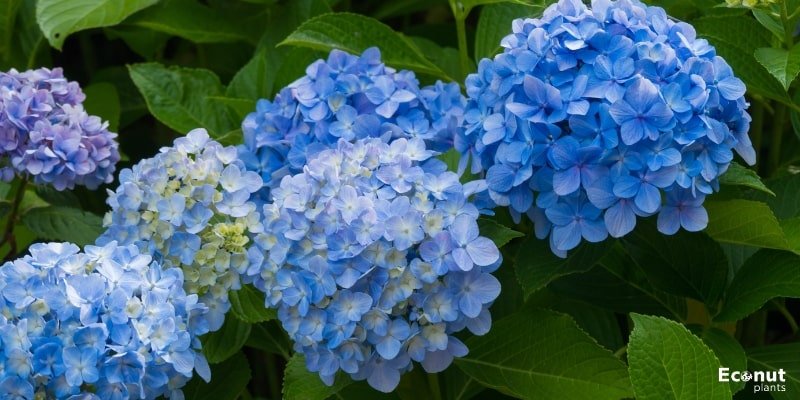
Studies have shown that incorporating used coffee grinds into your soil will enhance its capacity to retain water. This is great to a point. It has been shown that a plant’s growth is stunted when water is retained excessively.
This will have an impact on the growth of the plant as well as the growth of their gorgeous blossoms, which are the source of their fame.
It’s possible that adding coffee to your garden will eradicate beneficial bacteria and earthworms, although this isn’t always the case.
Conclusion
Numerous articles detailing how coffee contributed to the blue hue of their hydrangeas can be seen all over the internet. There is a high likelihood that these gardeners experienced this. However, there are a lot of absent details.
The consequences of adding spent coffee grinds to your soil over time are the most crucial factors to consider. It seems to me that this garden experiment is either fiction or, at best, a “partial hack” that needs further testing.
But I think there’s too much at stake here without sufficient evidence to support it. In addition to employing other techniques to preserve my hydrangeas blue, I’ll keep adding coffee grounds to my compost bin.

